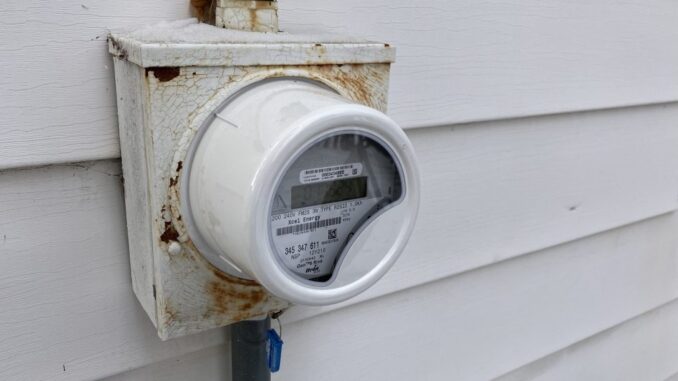
Xcel Energy customers in Minnesota will likely soon have good reason to hold off on running dishwashers or charging vehicles until bedtime.
The state’s largest utility is asking regulators to approve a major change to how residential customers have paid for their electricity for decades.
In December, the company proposed moving away from the standard, flat hourly rate that almost all its customers currently pay and replacing it with a variable “time-of-use” rate design that charges more for power during periods of high demand.
Rates between 3 p.m. and 8 p.m. weekdays would be twice the rate customers currently pay, and seven times higher than the proposed overnight “off peak” rate between 12 a.m. to 6 a.m. Other hours of the day would be charged a “base” rate.
Winter electricity would be, on average, more than 30% cheaper for base and peak rates than Xcel’s summer rates. Xcel told regulators that typical customers will pay 17.8% more for electricity in summer and 10.6% less in winter, assuming no behavioral changes in consumption. Xcel customers use roughly 20% less electricity in winter as most currently heat their homes with natural gas.
Xcel wants time-of-use to be the default billing system for all residential customers, though customers could opt-out.
The proposal follows a two-year pilot project Xcel operated in neighborhoods in suburban Eden Prairie and the Longfellow area of South Minneapolis. The company found a modest shift in customers reducing energy in peak periods, enough to support broader adoption across its Minnesota territory, according to Xcel spokesperson Theo Keith.
“This new proposal will make our successful pilot available to more customers,” he said. “During the pilot, we saw that participants saved a modest amount on their energy bills even with a modest increase in overall energy usage. Customers responded to the pilot rate design by shifting some usage away from peak times with the highest energy prices.”
The new pricing structure is possible because of Xcel’s installation of more than 500,000 smart meters that will allow customers to better track their energy use through an online portal, Keith said. The proposal also fulfills a Public Utilities Commission requirement that Xcel move to time-of-use rates, he said.
The concept has parallels with the growth of dynamic pricing by hotels, airlines, ride-hailing services and sports and entertainment tickets. California has been the leader in time-of-use utility pricing, with power companies there using it as the default for billing customers. Several other utilities nationwide have similar rate programs or are studying its potential to help prepare the grid for more electrification and renewable energy. And Xcel’s Colorado subsidiary has begun rolling out time-of-use rates there.
The utility believes that by shifting consumption to later and overnight hours, it can take advantage of the abundant wind energy typically available during those periods, Keith said. Shifting to non-peak times also helps Xcel avoid building more power plants, especially peaker plants that operate only a handful of hours annually but often create high emissions.
Xcel is part of the Midcontinent Independent System Operator (MISO) regional energy market, one of two in the country forecasted to have a “capacity crunch” over the next five years, said Gabe Chan, an associate professor and energy policy expert at the University of Minnesota. He said that trying innovative approaches such as time-of-use to reduce consumption at high demand times will help balance the electric grid.
Citizens Utility Board of Minnesota executive director Annie Levenson-Falk said time-of-use rates could be more fair than the current rate because, under a flat rate, customers pay more than it costs to produce electricity in low-demand periods and less than the cost during high-demand times.
The consumer advocacy nonprofit’s Illinois affiliate found in a study “that time-of-use rates are more equitable” because lower-income households didn’t use much energy in peak periods than higher-income households, Levenson-Falk said.
Using 2016 data from Commonwealth Edison, Illinois’s largest utility company, the report showed that 97% of its customers would save money under a time-of-use plan without making any behavioral changes. They would reduce their bill by an average of 13.2%, with low-income households seeing an additional 1% savings.
Shifting electricity use to base and non-peak hours tends to reduce emissions, too, Levenson-Falk said. Wind energy is widely available at night, while solar energy tops out in the middle of the day. She said that as solar power grows in Minnesota, Xcel could adjust the peak to take advantage of the sun.
But there are drawbacks. Levenson-Falk said customers using power during peak hours will see substantial bill increases. Some low-income households may not have the ability to change consumption patterns. And customers may find it hard not to use electric stoves, heat pumps or water heaters during peaks.
“Are we going to be disincentivizing beneficial electrification?” she asked.
There’s also the problem of reducing peaks during some hours only to create them in other hours. A University of Texas study of 100 Austin homeowners using time-of-use rates found most shifted use of appliances such as heating, ventilation, and air conditioning equipment to non-peak times — so much so that they created a higher residential peak in lower-cost hours.
Xcel’s two-year “Flex Pricing” pilot study that ended in 2022 involved nearly 17,000 ratepayers in Eden Prairie and Minneapolis, with 10,000 in the time-of-use program and the rest in the control group. Working with consulting firm Guidehouse, Xcel discovered in the pilot that electricity demand during peak periods was “modest” in Eden Prairie. In Minneapolis, the same was true in the pilot’s first year before trailing off in year two.
The pilot found a small subsector of participants drove much of the reduction in energy use during peak times. Representing around 10% of the participants, these “highly engaged” customers understood time-of-use rates and made proactive decisions to decrease their electricity use.
Xcel concluded in its regulatory filing that “the demand impact was close to achieving the goal of incentivizing less energy consumption during peak times in a revenue-neutral manner.” The study saw customers increase their energy consumption slightly, shifting electricity use rather than reducing it.
Customer bills in Eden Prairie grew slightly and declined marginally in Minneapolis. Participants paid more than they would at the standard rate in summer and less in winter, but Eden Prairie did not see enough decline to make up the difference. The highly engaged participants made the most progress in seeing their bills decline yet averaged just a $4 monthly decrease.
The pilot’s income-qualified customers, mostly living in Minneapolis, saw bills reduced by 3%. Those customers were “statistically significantly more satisfied with the pilot than the general population was,” Xcel said. “This was like the response from participants who were seniors, renters, or those who use a smart thermostat.”
Matthew Grimley, a University of Minnesota researcher at the Chan Lab, said Xcel likely did not achieve more demand response because not all customers had the technology to control demand and reduce consumption, such as smart thermostats, controllable and electrified water heaters, and electric vehicles.
Xcel reported that fewer than 50% of pilot participants knew about energy efficiency kits the company made available to help them reduce energy use. Just 20% went through the process of receiving a kit. Grimley said Xcel will have to do a better job of sharing time-of-use kits for the rates to work.
Chan added that the variable rates should be only the start of a new way of thinking about how the electric grid operates. He believes giving rebates during critical peaks and using text messaging to ask customers to reduce their electricity might be “a more direct way that achieves the same goals at potentially much more effective scaling.”
Organizations and individuals can now forward comments to Xcel’s time-of-use docket. The Public Utilities Commission has not scheduled any hearings yet, but the utility hopes to begin dynamic pricing in 2025.



